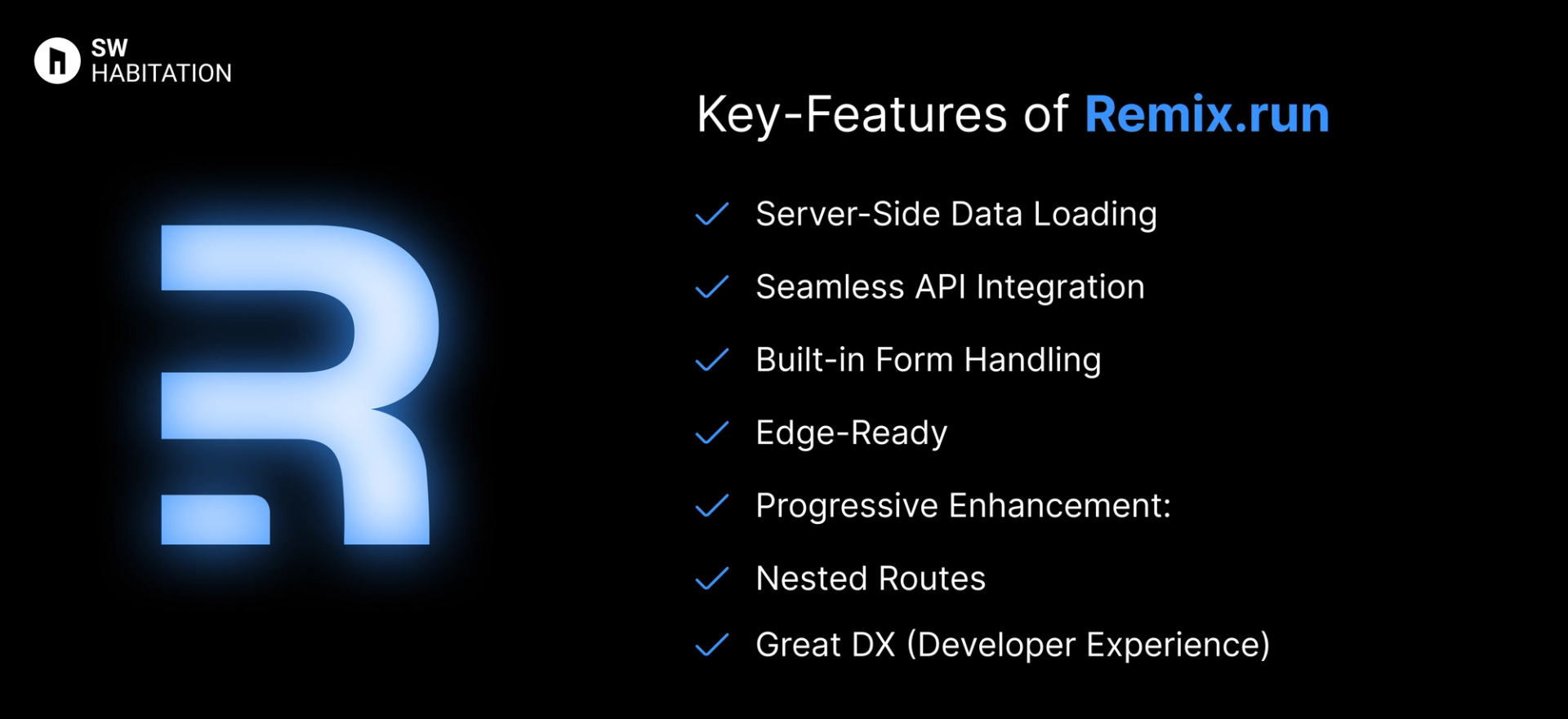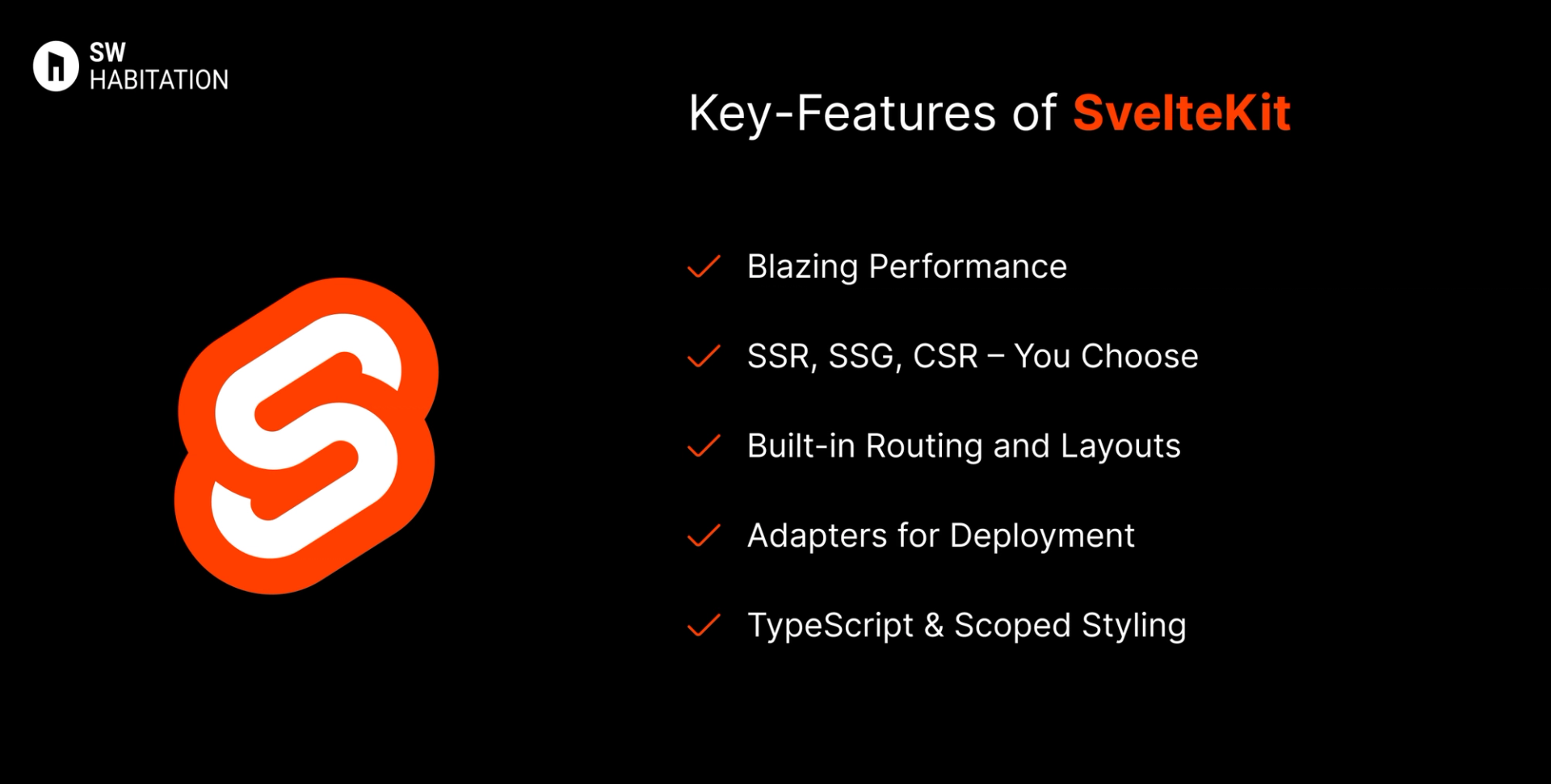Remix vs. SvelteKit

Remix

SvelteKit
So, you know when you want to build a website or app, but doing everything from scratch feels kinda overwhelming? That’s where web frameworks come in. They’re like a ready-made set of tools and building blocks that help you get things up and running way faster. Instead of figuring out every little piece yourself, a framework gives you a solid base to build on, and lets you focus on making something cool.
What is Remix ?
Remix is a React-based full-stack framework that focuses on server-side rendering (SSR) and progressive enhancement. Unlike static site generators, Remix loads data on the server and sends only what’s needed to the browser, making apps feel lightning-fast. It’s built to optimize UX, performance, and accessibility while giving developers a structured and scalable way to build web applications.
Key Features of Remix


- Server-Side Data Loading: Fetch data on the server before sending it to the client, reducing unnecessary API calls.
- Seamless API Integration: Easily connect with any backend or database.
- Built-in Form Handling: No need for external libraries like React Query – Remix handles form submissions naturally.
- Edge-Ready: Works seamlessly on edge computing platforms like Vercel and Cloudflare Workers.
- Progressive Enhancement: Apps work even if JavaScript is disabled, ensuring a smooth user experience.
- Nested Routes: Create modular components that load only the data they need, improving performance.
- Great DX (Developer Experience): Simple routing, fast refresh, and minimal boilerplate.
Advantages of Remix.run
- Works with Any Backend: Remix doesn’t lock you into a specific database or API.
- Improved UX: Fine-tuned loading strategies create a smoother browsing experience.
- Scalable: Works for both small projects and enterprise-grade applications.
- Great SEO: Unlike SPAs, Remix ensures search engines can index content properly.
- Fast and Efficient: Server-side rendering optimizes performance and reduces unnecessary re-renders.
Disadvantages of Remix.run
- Hosting Considerations: Requires a backend environment (like Node.js), so it’s not ideal for purely static sites.
- Newer Ecosystem: Compared to Next.js, Remix has fewer third-party integrations.
- Learning Curve: If you’re used to client-side React apps, SSR might take some time to grasp.
What is SvelteKit?
SvelteKit is the full-stack application framework built for the Svelte (https://svelte.dev/) UI library. Unlike traditional frameworks that run in the browser, Svelte compiles your code to highly optimized JavaScript at build time which means no virtual DOM, minimal runtime, and ultra-fast performance.
SvelteKit brings everything you need to build web apps into one unified toolchain routing, layouts, API endpoints, server-side rendering (SSR), static site generation (SSG), client-side navigation, and more — all with smart defaults and deep configurability.
Key Features of SvelteKit


- Blazing Performance: Thanks to Svelte’s compiler-based approach, apps are lean, fast, and minimal.
- SSR, SSG, CSR – You Choose: Build pages using static generation, server rendering, or client-side rendering per route.
- Built-in Routing and Layouts: File-based routing with nested layouts simplifies app structure.
- Adapters for Deployment: Deploy to any platform — Netlify, Vercel, Cloudflare Workers, Node, or static hosting.
- TypeScript & Scoped Styling: Comes with TypeScript support and CSS scoped to components.
Advantages of SvelteKit
- Minimal JavaScript: Only ships what the user needs, no heavy runtime.
- Unified Experience: Routing, layouts, endpoints, and rendering are all built-in.
- Flexible Deployment: Use adapters to deploy anywhere, from edge functions to static hosts.
- Developer Happiness: Clean syntax, fewer abstractions, and fast HMR (Hot Module Reloading).
- Excellent SEO: SSR and pre-rendering make your content crawlable by default.
Disadvantages of SvelteKit
- Smaller Ecosystem: Compared to React or Vue frameworks, it has fewer plugins/modules.
- Learning Curve for Beginners: Svelte syntax is simple, but newcomers may need time to grasp server/client boundaries in SvelteKit.
- Tooling Stability: While stable, SvelteKit is still evolving and may change more rapidly than older frameworks.
- Advanced Use Cases: Handling complex authentication, authorization, or large-scale caching may need custom solutions.
Comparison Between Remix vs SvelteKit
Use Cases of Remix
- Interactive Dashboards: Efficient data fetching makes Remix ideal for real-time applications.
- E-commerce Sites: Fast data fetching and seamless UI interactions.
- Content-Rich Websites: Great SEO and progressive enhancement ensure content is always accessible.
- SaaS Applications: Server-rendered pages reduce loading times.
Use Cases of SvelteKit
- Technical Blogs & Portfolios
- Dashboards & SaaS Platforms
- Marketing Websites
- E-commerce Sites
- APIs & Endpoints
Other Resources
Conclusion
Web frameworks make building websites and apps a whole lot easier. Whether you’re working on a personal project or something big for work, they help with the heavy lifting—like routing, design structure, and how everything connects.
With support for things like server-side rendering, optimized performance, and developer-friendly features, these tools let you create faster, smarter, and cleaner websites. Just pick the one that fits your style, and start building something awesome 🚀
Frequently asked questions
Can I use Remix with my existing app?
Yes, absolutely Remix can be integrated into existing apps or used to build new ones. It works well with other tools and technologies, giving you flexibility.
Where can I host a Remix app?
You can host Remix apps anywhere that supports modern JavaScript and Node.js, like Vercel, Netlify, or traditional cloud platforms like AWS or Heroku.
How does Remix improve performance?
Remix focuses on delivering minimal JavaScript to the browser, using server-side rendering, and optimizing page loads. It also prioritizes fast data fetching and content delivery.
Is SvelteKit production-ready?
Yes. SvelteKit reached 1.0 stable in late 2022 and is now considered production-ready. Many companies are already using it for production apps.
Can I migrate my existing Svelte app to SvelteKit?
Yes. You can move your Svelte components into a SvelteKit project and then set up routing, data loading, and server logic. The migration is straightforward but may require some restructuring.
Does SvelteKit support TypeScript?
Yes. TypeScript support is built-in. You can enable it when creating your project with npm create svelte@latest.
Which rendering modes does SvelteKit support?
SvelteKit supports SSR (Server-Side Rendering), SSG (Static Site Generation), CSR (Client-Side Rendering), and even hybrid setups in a single app.
